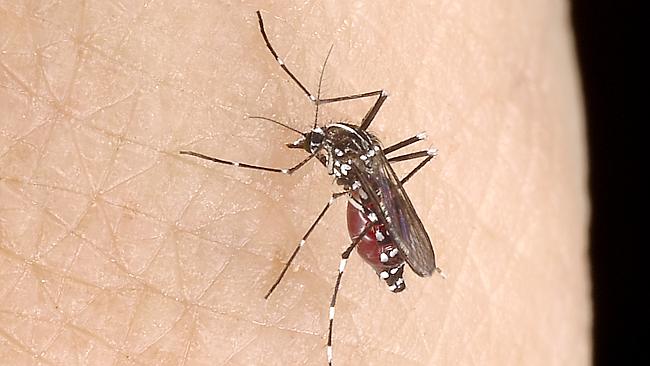
Albopictus mosquito known as Asian Tiger mosquito. It’s coming here and it is insatiable. Source: Supplied
QUEENSLAND is preparing for the invasion of an aggressive and exotic pest that threatens to spread dengue fever to southern capitals and could mean the end of the outdoor barbecue.
Queensland scientists have begun breeding the Asian tiger mosquito, a highly invasive species with the ability to bite dozens of times a minute.
They’re closely studying the country’s only colony of the dreaded mozzie, caged behind a series of locked doors in Brisbane’s QIMR Berghofer Medical Research Institute.
Associate professor Greg Devine says the research is vital given the pest’s potential to introduce the debilitating chikungunya virus and spread diseases such as dengue to capital cities.
“What we’d like to understand is the real risk of transmission in urban centres like Brisbane and Sydney,” he said.
“We are also looking at the way it would interact with native mosquitoes so we can determine how rapid its impact will be.” But its greatest impact will be on Australia’s outdoor lifestyle, given the pest thrives in and around people’s homes — and bites all day.

Australians have good reason to fear the Asian tiger mosquito (aedes albopictus). Source: Supplied
“It’s come to be known as the barbecue stopper, and for good reason,” Associate Prof Devine said.
The large and aggressive mosquito is capable of spreading several diseases, including Ross River virus, yellow fever and chikungunya.
There is no treatment for the chikungunya virus, common in southeast Asia, which can leave sufferers with severe joint pain for months.
When the Asian tiger mosquito will invade Australia is anyone’s guess, but it seems to be a case of when and not if.
“It’s definitely only a matter of time,” associate prof Devine said.
“It arrived in the Torres Strait about 2005, but of course that’s not the only route at which it can come in.
“There is no doubt it is coming eventually because it’s been picked up so many times at Australia’s borders.”
